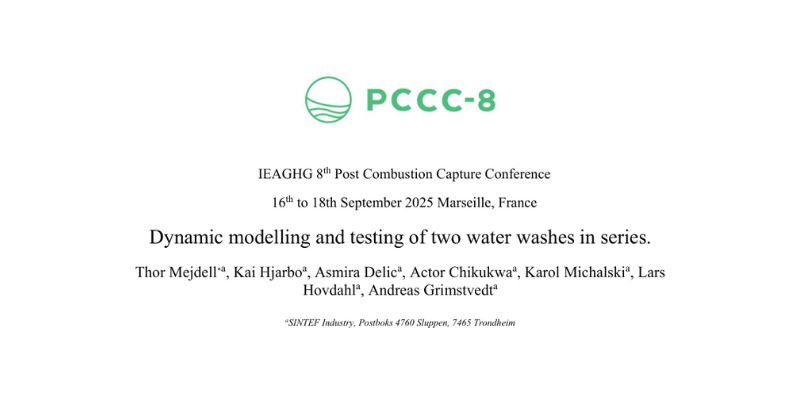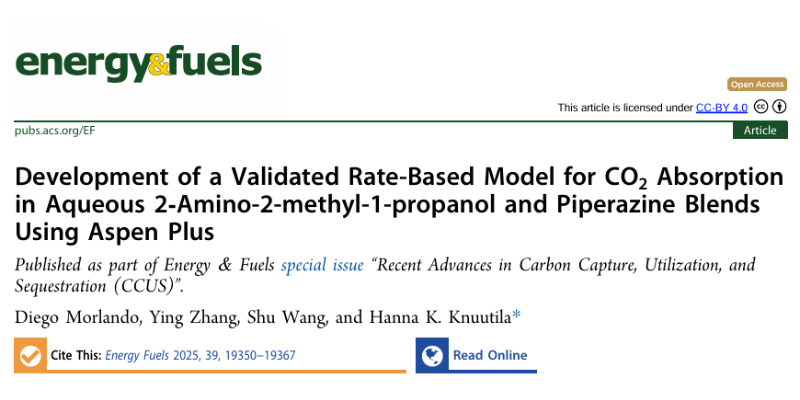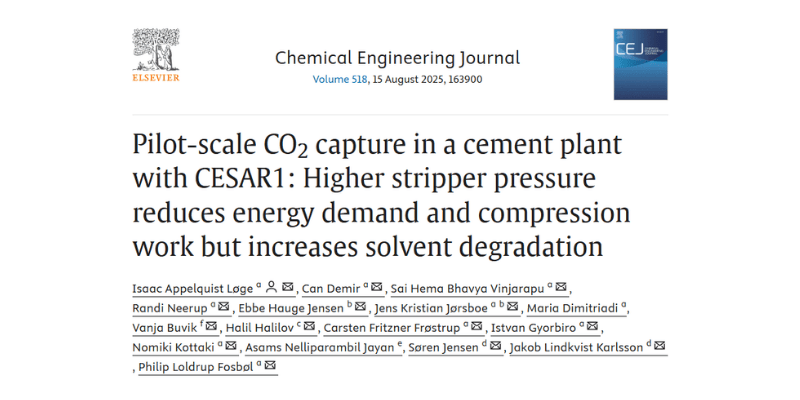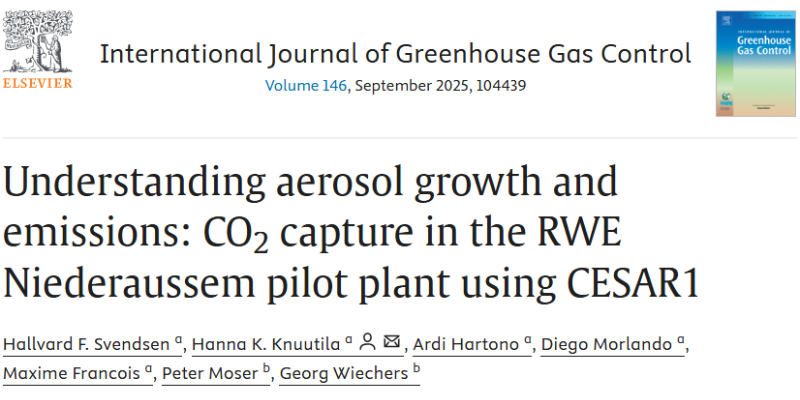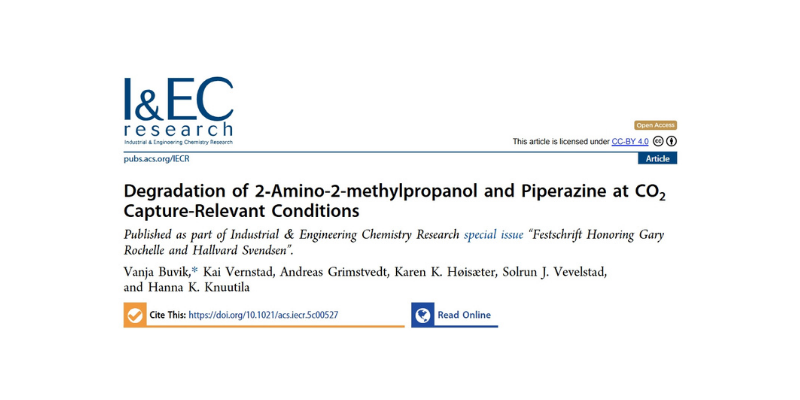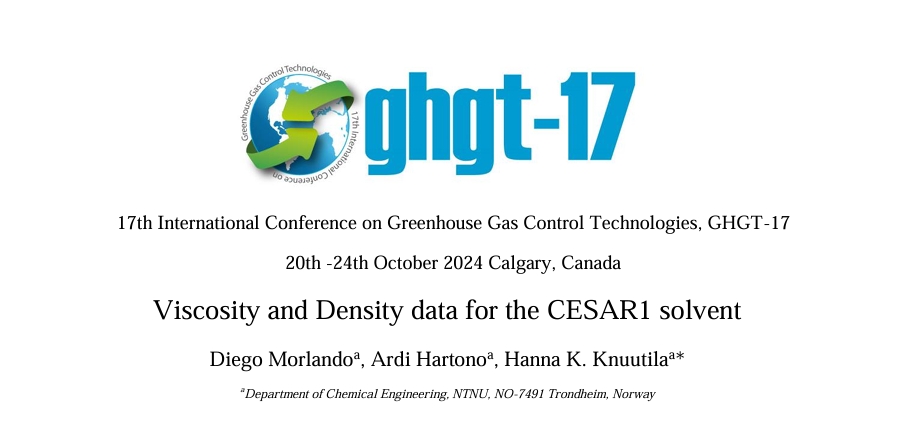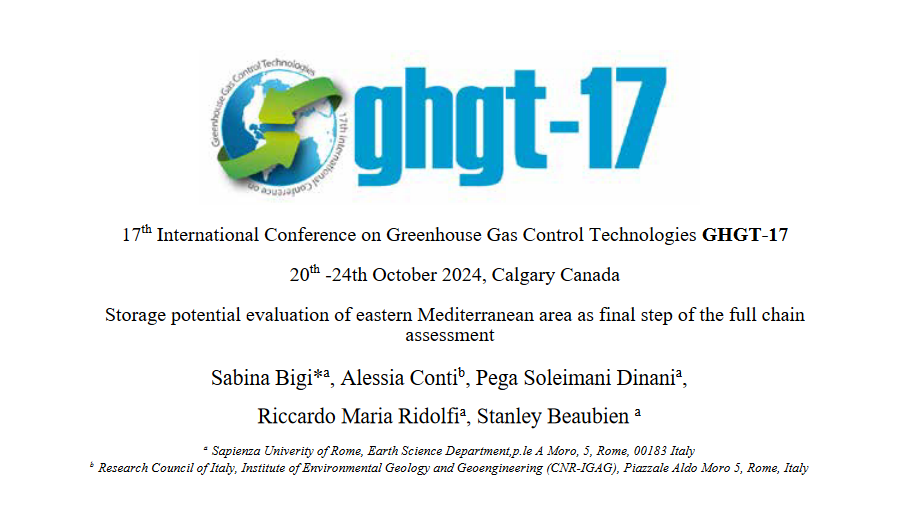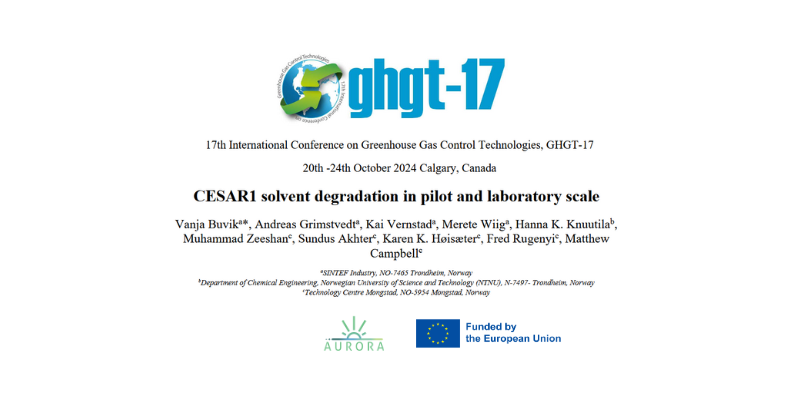Abstract
An amine-based CO2 capture plant may cause harmful emissions to the atmosphere, and it is important to measure and control the emissions of amines and products resulting from their degradation during the process. The present work is a part of the SCOPE and AURORA projects and presents modelling and experimental results from the SINTEF CO2Lab pilot plant located in Trondheim, Norway [1]. The focus of the present work has been on a water wash system in the pilot plant. This water wash system is located downstream the absorber, consisting of two external sections (see Figure 1).
The gas from the top of the absorber is about 60°C and is directed to the two sections AW3 and AW4 before it leaves the plant at about 35°C. This outlet temperature must be close to the outlet temperature of the DCC such that the water balance in the pilot plant is maintained. Each section consists of 1.5m of structured packing using circulating water with cooling for temperature control. The cooling of the gas provides water condensation in the packing and increases the liquid level in the sumps. In AW4, the excess liquid is pumped to section AW3. The water in that section will then be diluted. The excess liquid in AW3 is pumped back to the absorber.
In both projects, the CESAR1 solvent with 1.5 M piperazine and 3 M AMP has been used. The thermodynamic data and models developed in these projects have been useful for all the modelling activities in the projects. For the understanding of the water wash systems, it has been important to establish a dynamic model that describes the conditions in the water wash sections such that it is able to predict the outlet gas concentrations of amines also under transient conditions.
Keywords: Absorption, pilot plant, dynamic modelling, emission measurements
Authors: Thor Mejdell, Kai Hjarbo, Asmira Delic, Actor Chikukwa, Karol Michalski, Lars Hovdahl, Andreas Grimstvedt (SINTEF Industry).
Publication – Development of a Validated Rate-Based Model
Abstract In this work, we developed a new e-NRTL thermodynamic framework for CO2 absorption in aqueous mixtures of 2-amino-2-methyl-1-propanol (AMP)…
Publication – Pilot-scale CO2 capture in a cement plant with CESAR1
Abstract Carbon capture from hard-to-abate industries is essential. This study investigates the effect of stripper pressure on the performance of…
New Publication: Aerosol Modeling in CO2 absorption using CESAR1
We are proud to announce that Hallvard F. Svendsen, Hanna K. Knuutila, Ardi Hartono, Maxime Francois and Diego Morlando at…
Thermodynamic Properties of CO₂ Absorption in CESAR1 — Essential Data for Better Process Modelling
We are proud to announce a new scientific publication from the AURORA project, authored by Diego Morlando, Ardi Hartono and…
Journal Publication – In-Depth Study of CESAR1 Solvent Degradation Under CO₂ Capture Conditions
A new scientific publication based on research from the AURORA project has just been released in the journal Industrial &…
Conference publication – GHGT-17: Viscosity and Density data for the CESAR1 solvent
Abstract Global warming is a major issue that needs to be addressed and limited. The CESAR1 solvent blend has a…
Conference publication – GHGT-17: “Storage potential evaluation of eastern Mediterranean area as final step of the full chainassessment”
The final step in capturing and storing carbon dioxide (CO₂) emissions is geological storage, where CO₂ is injected deep underground…
Understanding Solvent Degradation in CO₂ Capture – CESAR1 Solvent Degradation in Pilot and Laboratory Scale
The fight against climate change requires innovative solutions, and one promising method is CO₂ capture and storage (CCS). CCS involves…
Turning Waste Into Opportunity: Thermal Reclamation Chemistry of Common Amine Solvents
CO2 capture technology is vital for reducing greenhouse gas emissions. But what happens when the chemicals used in this process…
Closing Knowledge Gaps – Density and Viscosity of Unloaded and CO2-loaded Aqueous AMP-PZ blends
AURORA’s latest scientific journal publication provides experimental density and viscosity data on different unloaded and CO2-loaded aqueous blends of 2-amino-2-methyl-1-propanol…

